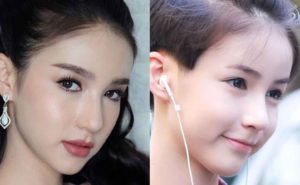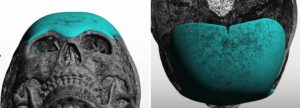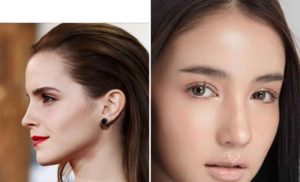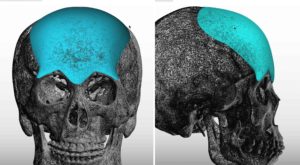The forehead occupies a large amount of the face, encompassing up to one-third of its frontal surface area. While it appears to be a featureless surface, there are well known gender differences in its shape. It is traditionally known that men have prominent brow bones and a forehead that has more of a relative backward inclination. Women have no visible brow bone protrusion and a more vertical forehead inclination by comparison.
But even within women, there are subtle variations in the desired forehead shape. There is the influence of the size and shape of the bony forehead between the temporal lines and the location and pattern of the frontal hairline. It is often cited that there are ethnic differences in the desired shape of the female forehead. But having operated on numerous Caucasian and Asian females for forehead augmentation there are less preferred differences than some may think.


Such custom forehead implants can be placed through relatively small scalp incisions that are located serial centimeters behind the frontal hairline. Most of the pocket dissection is done in an endoscopy fashion for a more gentle and complete dissection along the supraorbital rims and down into the glabellar region of the nose.
Dr. Barry Eppley
Indianapolis, Indiana




